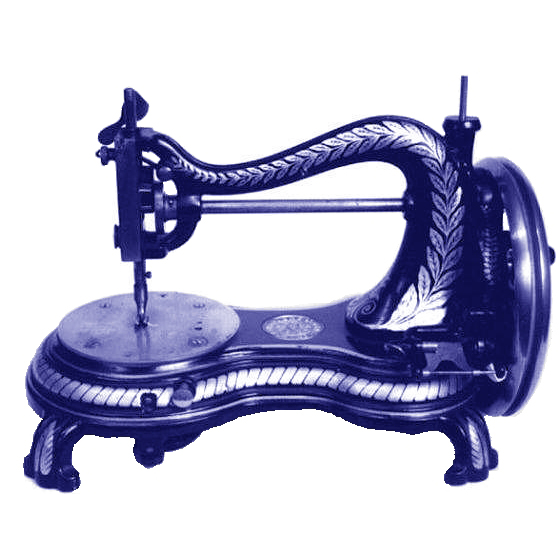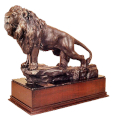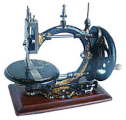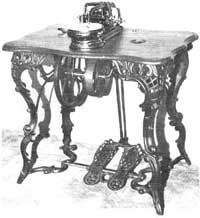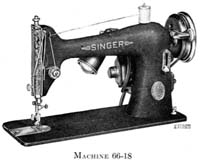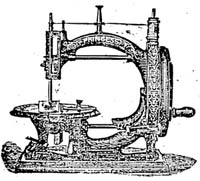Class 28
Singer Model 28: The Vibrating Shuttle Classic

Model 28-4
Vibrating Shuttle
Lockstitch
For Operation by Hand
(Picture Courtesy of Dorothy Brumleve)
The Singer Model 28, introduced in 1886, stands as one of the most recognized and enduring sewing machines in Singer's extensive catalog. This article explores the history, features, and legacy of this iconic machine that helped establish Singer's dominance in the home sewing market.
Introduction and Historical Context
The Model 28 was introduced during a time of rapid expansion for the Singer Manufacturing Company. Building on the success of earlier models, the 28 represented Singer's commitment to making reliable, user-friendly machines available to the average household. Coming after the earlier New Family (Model 12) machines, the Model 28 featured significant improvements in both design and mechanics.
The Model 28 remained in production for over six decades, seeing numerous variations and improvements while maintaining its core vibrating shuttle mechanism. This extraordinary longevity speaks to the sound engineering principles behind its design and its popularity among users worldwide.
Technical Specifications
The Model 28 is characterized by several distinctive features:
- Vibrating Shuttle (VS) Bobbin System : Instead of the rotary bobbin system found in later models, the 28 uses a boat-shaped shuttle that swings in an arc beneath the needle plate. This produces the same lockstitch as later machines but with a distinctive mechanism.
- Cast Iron Construction : Built during an era when durability was paramount, the Model 28 features a solid cast iron body, often with the distinctive "fiddle" or "violin" shaped base on the earlier models.
- Hand-Crank Operation : While treadle versions were available, the Model 28 pictured in the ISMACS collection is the hand-crank variant, making it portable and usable without external power.
- Lockstitch Formation : The machine produces a standard lockstitch, which remains the most common and versatile stitch type for domestic sewing.
- Decorative Decals : Like many Singer machines of its era, the Model 28 featured elaborate "Egyptian" style decal patterns on black japanned surfaces, though specific patterns varied throughout its production run.
Production Variants and Serial Numbers
Throughout its long production run, the Model 28 saw several important variations:
- 28K : Produced at Singer's Kilbowie factory in Scotland
- 28-1 to 28-4 : Different configurations of the same basic machine
- 28 vs. 128 : The Model 128 was introduced as a smaller, lighter variant of the Model 28
Serial numbers for Model 28 machines span from the mid-1880s through the 1940s, with production gradually phasing out as newer rotary hook models gained popularity.
Collectibility and Value
Today, the Singer Model 28 is highly valued by collectors and sewing enthusiasts for several reasons:
- Historical Significance : As one of Singer's most successful early models, the 28 represents an important chapter in sewing machine history.
- Mechanical Simplicity : The straightforward mechanism means many Model 28 machines remain functional today, over a century after manufacture.
- Decorative Appeal : The ornate decals and elegant design make it an attractive display piece even when not in use.
- Practical Usability : Unlike many antiques, Model 28 machines can still be used for actual sewing projects, with proper maintenance.
The value of a Model 28 varies considerably based on condition, completeness, rarity of the specific variant, and aesthetic considerations. Machines with original accessories, cases, or manuals command higher prices, as do those with particularly well-preserved decals.
Identifying a Model 28
The Model 28 can be identified by:
- The presence of a vibrating shuttle bobbin system
- The model number stamped on the machine (often on the slide plate)
- Serial number, which can be cross-referenced with Singer manufacturing dates
- The distinctive "fiddle" or "violin" shaped base on earlier models
Using and Maintaining a Model 28
Despite their age, many Model 28 machines remain fully functional today. Maintenance tips include:
- Regular cleaning and light oiling of moving parts
- Using the correct needles (typically 12x1 or 128x1)
- Keeping the shuttle race free of lint and debris
- Proper bobbin winding to ensure smooth operation
Modern sewers often appreciate the straight stitch quality and the ability to handle thicker fabrics that modern lightweight machines sometimes struggle with.
The Legacy of the Model 28
The Singer Model 28 represents a pivotal moment in home sewing technology. Its reliable vibrating shuttle mechanism and solid construction set a standard for home sewing machines that influenced designs for decades.
While more advanced models eventually superseded the 28, its influence on sewing machine design and its role in bringing reliable home sewing to countless households worldwide cannot be overstated. For collectors and sewing historians, the Model 28 remains a tangible connection to the golden age of mechanical sewing machines and a testament to Singer's engineering excellence.
References and Further Reading
For those interested in learning more about the Singer Model 28, ISMACS offers several original manuals available for download, including operation manuals and parts lists that provide valuable insight into these remarkable machines.
